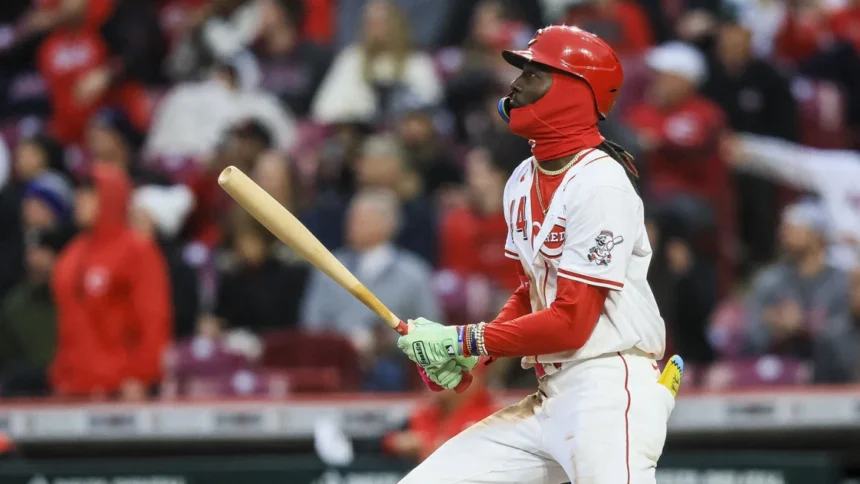“Torpedo” bats, so called because their shape resembles a torpedo, have dominated conversations at the start of the Major League Baseball season, ever since the New York Yankees hit 15 home runs across their opening three-game series against the Milwaukee Brewers.
The concept was developed by former MIT physicist and current Miami Marlins staffer Aaron “Lenny” Leanhardt when he was an analyst in the Yankees organization. The thinking, he told the Athletic, is to make the bat “as heavy and as fat as possible” in the spot where players are most often making contact with the ball.
The Yankees analytics department looked at every player’s hitting data so that the widest part of the bat – or the barrel – could be placed where they most often hit the ball and adjusted each player’s individual bat accordingly.
Now, teams from across the league, including the Reds, are starting to introduce the bats during games. As De La Cruz’s performance on Monday demonstrated, the results can be immediate.
The third-year shortstop’s seven RBIs at Cincinnati’s Great American Ball Park was a career-high, while his second home run in the seventh inning was measured at 436 feet and 110.2 mph off the bat.
He was supported by Matt McLain, who hit a third home run in his past three games. The Reds are now 2-2 after opening the season with a win and two losses against the San Francisco Giants.
Team manager Terry Francona said that De La Cruz’s big hitting was “more the player than the bat,” but hinted before the game that other players could start to follow suit.
“Our guys are going to order what they’re comfortable with,” he said, per MLB.com. “Bats are really personal. Whatever guys want to use, as long as they’re MLB approved, I don’t care.”
MLB’s bat regulations are fairly lax. The “torpedo” bats are legal so long as they follow league Rule 3.02, which states: “The bat shall be a smooth, round stick not more than 2.61 inches in diameter at the thickest part and not more than 42 inches in length. The bat shall be one piece of solid wood.”
The rule further specifies that experimental bats cannot be used “until the manufacturer has secured approval from Major League Baseball of his design and methods of manufacture.”




